26th August, 2025
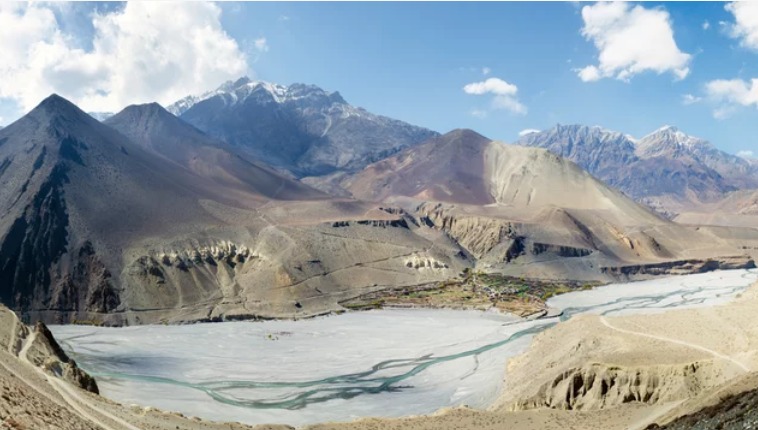
Nov 28, 2023
Annapurna Circuit in Trek October
- What is the weather like in Annapurna trek in October?
- What time of year is best for the Annapurna Circuit trek?
- Can you hike Annapurna Circuit in October?
- Can Annapurna Circuit be done in 10 days?
- Cost of the Trek
- Necessary Permits and Documentation For Trek
- Recommended Gear and Clothing for October Trekking
- Recommended Packing List for Annapurna Circuit Trek
- Some Helpful Tips for Annapurna Circuit Trek in October
- Challenges and Considerations of Annapurna Circuit Trek in October
- Is Annapurna Circuit Trek Right for Me?
- How Should I Prepare for the Trek?
- Food and Accommodation
- What About Drinking Water?
- Conclusion
- Annapurna Circuit Packages
Trekking the Annapurna Circuit in October is a highly favored choice among adventurers seeking a perfect blend of favorable weather, breathtaking scenery, and cultural immersion. As October marks the peak of Nepal's autumn season, the conditions are ideal for trekking, offering clear skies, mild temperatures, and stunning views of the Himalayan peaks.
One of the primary attractions of trekking the Annapurna Circuit in October is the weather. The monsoon rains have subsided, leaving behind lush landscapes and vibrant wildflowers in full bloom. The days are pleasantly warm, perfect for long hikes through diverse terrain, while the nights remain cool but not uncomfortably cold at higher altitudes. Trekkers can expect clear visibility, allowing for uninterrupted panoramas of snow-capped mountains and deep valleys.

ANNAPURNA CIRCUIT WITH TILICHO LAKE TREK 10 DAYS
10 Days Annapurna Circuit Trek with Tilicho Lake – Mesmerizing diversified adventurous Hiking trail of Nepal - Annapurna HimalayasThe Annapurna Circuit Trek With Tilicho Lake (4920m) Trek consistently...
Another significant advantage of trekking in October is the festive atmosphere along the trail. The trek coincides with the Hindu festival of Dashain and the Buddhist festival of Tihar (Diwali), offering trekkers opportunities to witness local celebrations and cultural traditions in the villages they pass through. This cultural immersion adds a unique dimension to the trekking experience, providing insights into the rich heritage of the Nepalese people.
Accommodation and amenities along the Annapurna Circuit are readily available in October, as this is a peak trekking season. Teahouses and lodges offer comfortable lodging and hearty meals, making it easier for trekkers to relax and rejuvenate after a day on the trail.
Overall, October stands out as an excellent time to trek the Annapurna Circuit, combining optimal weather conditions, stunning natural beauty, cultural richness, and a welcoming trekking environment. Whether you're a seasoned trekker or embarking on your first Himalayan adventure, October promises an unforgettable journey through one of the world's most spectacular trekking routes.
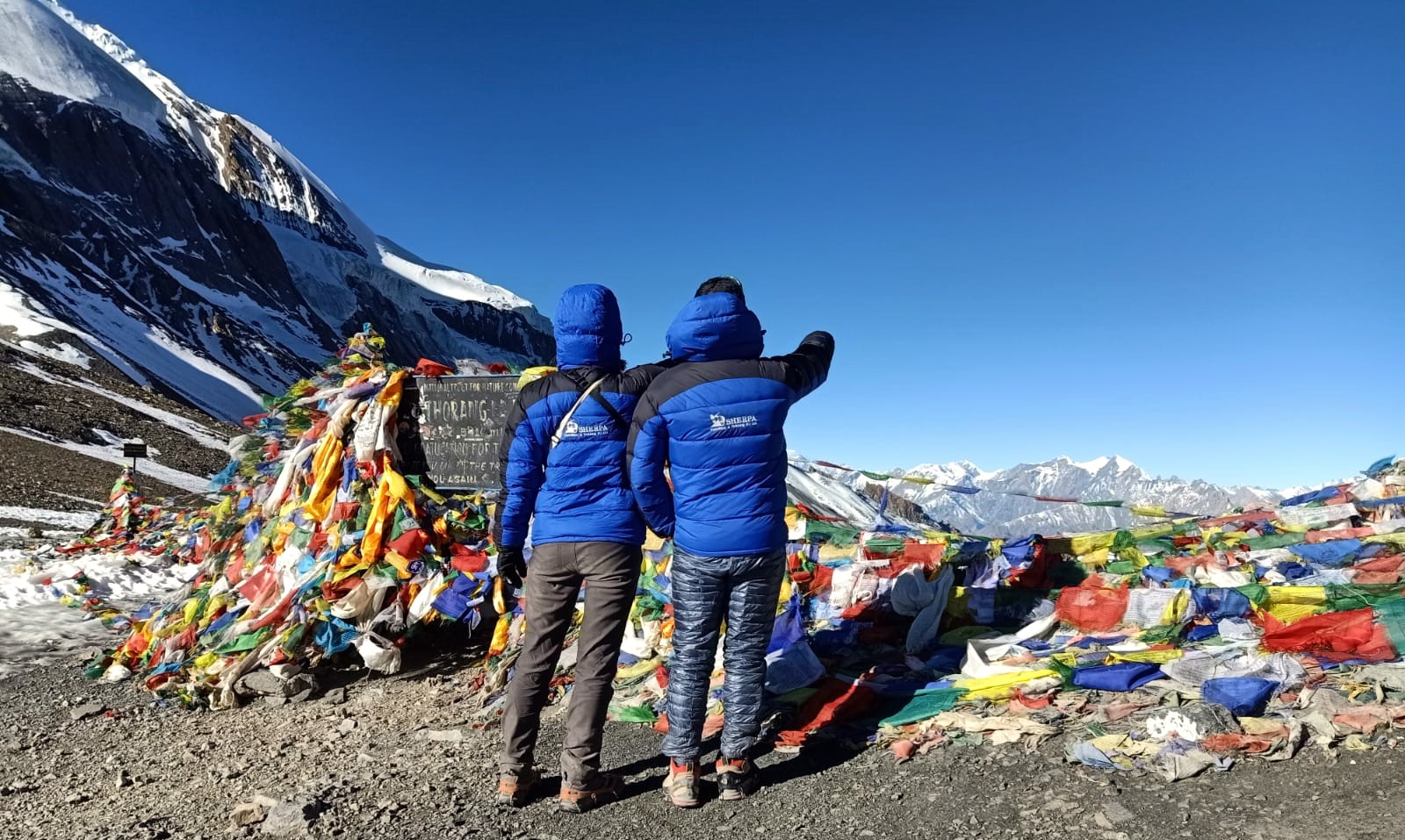
ANNAPURNA CIRCUIT WITH TILICHO LAKE TREK 9 DAYS
Short 9 Days Annapurna Circuit Trek with Tilicho Lake is one of the most impressive and challenging hikes in Nepal. It’s an incredibly popular trekking destination in Nepal and around the world given...
What is the weather like in Annapurna trek in October?
October is widely considered the best time to trek the Annapurna Circuit due to its favorable weather conditions. During this month, Nepal experiences clear skies, mild temperatures, and low humidity, making it ideal for trekking. Daytime temperatures at lower altitudes range from comfortable to pleasantly warm, while nights at higher elevations can be cool but not extreme. This weather pattern provides excellent visibility of the surrounding Himalayan peaks and allows trekkers to enjoy the stunning landscapes without the hindrance of monsoon clouds or rain. Overall, October offers stable and predictable weather conditions, creating optimal trekking conditions for adventurers seeking to explore the beauty of the Annapurna region.
What time of year is best for the Annapurna Circuit trek?
The best time of year for the Annapurna Circuit trek is generally considered to be from late September to early November. This period falls during Nepal's autumn season, characterized by clear skies, mild temperatures, and stable weather conditions. Trekkers can expect optimal visibility of the Himalayan peaks and lush landscapes adorned with blooming wildflowers. The weather in autumn is typically dry, following the monsoon season, which ensures safer trekking conditions with reduced risks of landslides and slippery trails. Moreover, the autumn months offer a vibrant cultural atmosphere along the trekking route, coinciding with local festivals such as Dashain and Tihar. These festivals provide trekkers with unique opportunities to experience Nepalese traditions and celebrations in the villages they pass through. Overall, the autumn season is favored for the Annapurna Circuit trek due to its combination of excellent weather, stunning scenery, cultural richness, and comfortable trekking conditions.

ANNAPURNA CIRCUIT WITH TILICHO LAKE TREK 14 DAYS
This trek Opened for tourists in 1980, the Annapurna region has been recognized as one of the world's popular trekking destination destinations according to a recent survey by the American magazine Mo...
Can you hike Annapurna Circuit in October?
Yes, October is an excellent time to hike the Annapurna Circuit due to the favorable weather conditions and stunning landscapes. During this month, the weather in Nepal's Himalayan region is typically stable with clear skies, mild daytime temperatures, and cool nights. These conditions provide optimal visibility of the surrounding peaks and landscapes, allowing trekkers to enjoy uninterrupted views throughout the journey. The trails are well-established and relatively dry after the monsoon season, offering safer and more comfortable trekking conditions compared to other times of the year. Additionally, October falls within the peak trekking season in Nepal, ensuring that teahouses, lodges, and amenities along the Annapurna Circuit are readily available and operational. This makes it easier for trekkers to find accommodation and enjoy a comfortable stay after long days of hiking. Overall, October is highly recommended for hiking the Annapurna Circuit, offering an unforgettable adventure amidst Nepal's majestic Himalayan scenery.
Can Annapurna Circuit be done in 10 days?
Completing the Annapurna Circuit trek in 10 days is challenging but feasible for experienced trekkers with good physical fitness. The traditional Annapurna Circuit route spans approximately 160-230 kilometers (100-145 miles), depending on the specific itinerary and side trips taken. Trekkers aiming for a 10-day itinerary typically cover 15-25 kilometers (9-16 miles) per day, which involves walking for 6-9 hours daily on varied terrain, including steep ascents and descents.
To complete the trek in 10 days, it's essential to be well-prepared physically and mentally, as well as to acclimatize properly to the altitude. This may involve including acclimatization days at higher altitudes to reduce the risk of altitude sickness.
Choosing a shorter itinerary means missing out on some side trips or cultural experiences along the route, but it allows trekkers with limited time to experience the essence of the Annapurna Circuit. It's crucial to plan the trek carefully, considering factors such as fitness level, weather conditions, and accommodation availability along the route. With proper planning and determination, completing the Annapurna Circuit trek in 10 days can be a rewarding and memorable adventure in the heart of the Himalayas.

ANNAPURNA CIRCUIT WITH TILICHO LAKE TREK 15 DAYS
This 15-day trek takes you through the Annapurna Conservation Area and to the highest alpine pass in the world – Thorong La Pass (5,416m/17,769ft) and to Tilicho Lake. You will also trek through the d...
Cost of the Trek
The cost of trekking the Annapurna Circuit varies depending on several factors such as duration, accommodation preferences, guide or porter services, and personal spending habits. On average, budgeting around $700 to $1500 USD per person is a reasonable estimate for a complete trek including permits, meals, accommodation, and other miscellaneous expenses. Costs can be higher if opting for more luxurious accommodations or additional services like guided tours or porter support. It's essential to factor in expenses for permits, food, lodging, transportation to and from the trek starting point, and any unforeseen costs. Trekkers should also budget for tips for guides and porters, as these are customary and appreciated. Planning ahead and researching costs can help ensure a realistic budget for a memorable Annapurna Circuit trekking experience.
Necessary Permits and Documentation For Trek
For trekking the Annapurna Circuit, several permits and documentation are required. The primary permits include the TIMS (Trekkers' Information Management System) card and the Annapurna Conservation Area Permit (ACAP). The TIMS card costs around $20 USD per person and is obtained through a trekking agency or the Nepal Tourism Board. The ACAP costs approximately $30 USD per person and is necessary for entering the Annapurna Conservation Area, protecting its natural environment and wildlife. Additionally, if extending the trek to Upper Mustang or other restricted areas, an additional permit is required. Trekkers must carry valid identification (passport) and a few passport-sized photos for obtaining permits. It's advisable to arrange permits in advance through a registered trekking agency or upon arrival in Kathmandu or Pokhara to ensure a smooth start to the trek.

ANNAPURNA ROUND TREK
WORLD-CLASS TREK THROUGH THE (7,629 sq km) Annapurna Conservation Area – the largest in Nepal.The Annapurna Circuit has often been voted as the best long-distance trek in the world!This is a comprehen...
Recommended Gear and Clothing for October Trekking
Trekking the Annapurna Circuit in October requires careful consideration of gear and clothing to ensure comfort and safety amidst varying weather conditions. Essential gear includes a sturdy and comfortable pair of trekking boots with ankle support, lightweight and moisture-wicking clothing suitable for layering (including thermal base layers, fleece jackets, and waterproof outer layers), a warm sleeping bag rated for cold temperatures, a hat and gloves for chilly mornings and evenings, sunglasses and sunscreen for UV protection at higher altitudes, and a reliable backpack with rain cover. Other items to pack include a headlamp or flashlight with extra batteries, trekking poles for stability on uneven terrain, a basic first aid kit, toiletries, and water purification tablets or a refillable water bottle for staying hydrated. Packing efficiently and light is key, as porters or yaks may carry gear along the trek. By packing essential gear and clothing suited for October conditions, trekkers can enjoy a comfortable and memorable adventure on the Annapurna Circuit.
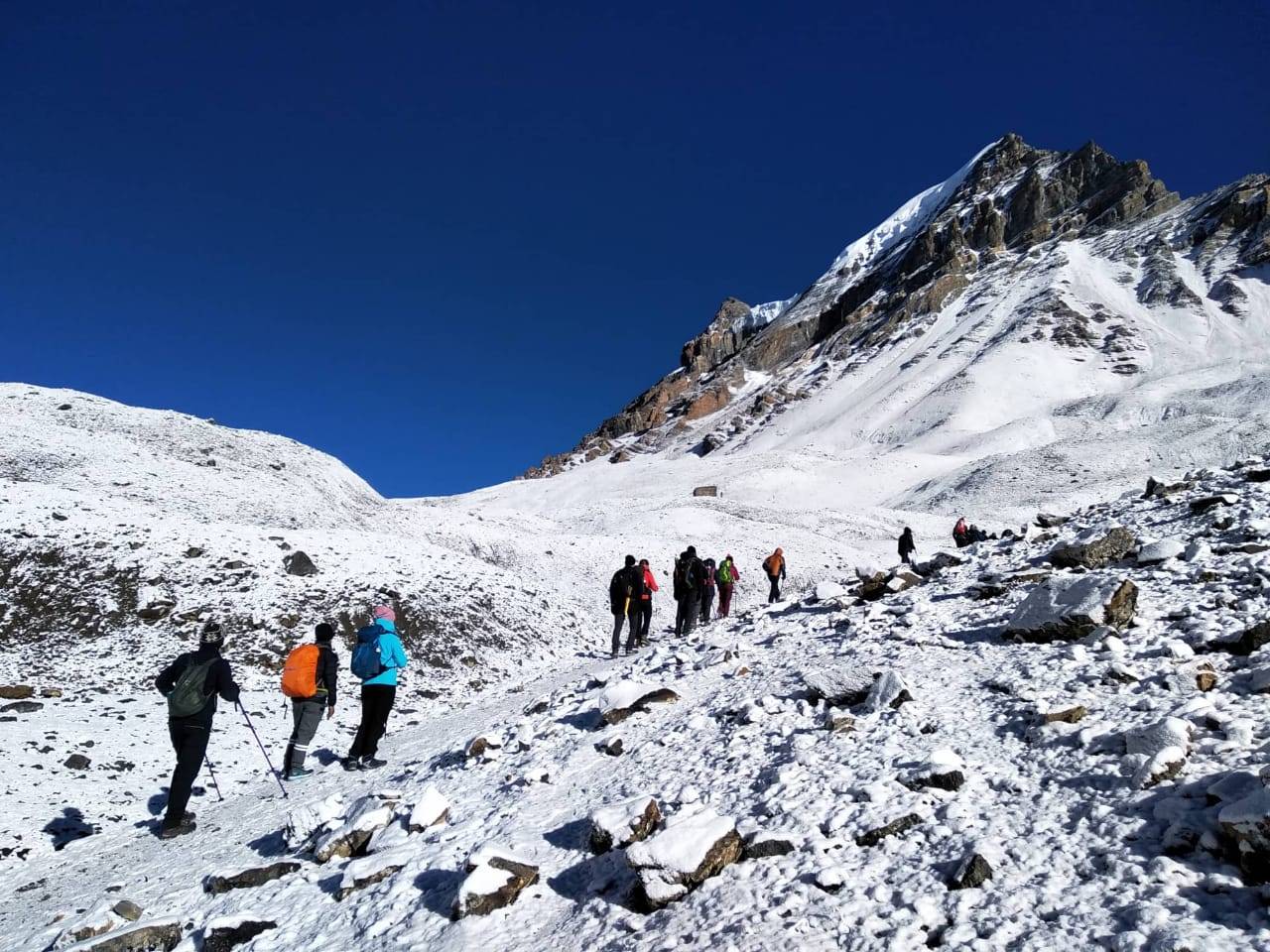
ANNAPURNA CIRCUIT TREK
A LIFE-CHANGING EXPERIENCE – incredible beauty!Circumnavigate the Annapurnas – with one peak at 8091m & 28 peaks over 6000m surrounded by the Kali Gandaki Gorge, Marshyangdi River & Pokhara in...
Recommended Packing List for Annapurna Circuit Trek
Packing smartly ensures a comfortable and enjoyable trekking experience on the Annapurna Circuit in October. Here's a recommended packing list:
- Clothing:
- Thermal base layers (tops and bottoms)
- Fleece jackets or sweaters
- Waterproof and windproof jacket and pants
- Lightweight trekking pants and shorts
- Undergarments and socks (wool or synthetic)
- Hat and gloves
- Footwear:
- Sturdy and comfortable trekking boots with ankle support
- Flip flops or sandals for teahouse comfort
- Gear:
- Sleeping bag (rated for cold temperatures)
- Backpack with rain cover
- Headlamp or flashlight with extra batteries
- Trekking poles (optional but recommended)
- Sunglasses with UV protection
- Sunscreen and lip balm
- Miscellaneous:
- Personal toiletries and medications
- Basic first aid kit (including blister treatment)
- Water purification tablets or water filter
- Towel (quick-dry)
- Documents:
- Passport (with visa for Nepal)
- TIMS card (Trekkers' Information Management System)
- ACAP (Annapurna Conservation Area Permit)
- Travel insurance (covering trekking activities)
- Extras:
- Camera with extra batteries or power bank
- Notebook and pen
- Snacks and energy bars
By packing essentials and considering the weather conditions and trekking challenges, trekkers can enjoy a smoother and more comfortable experience on the Annapurna Circuit in October.

14 DAYS ANNAPURNA CIRCUIT TREK
RECOMMENDED WORLDWIDE! VISIT THE HIGHEST PASS & DEEPEST GORGE. An opportunity of a lifetime and adventure seeker’s paradise!The Annapurna Circuit Trek in 14 days with a drive to Chame and Muk...
Some Helpful Tips for Annapurna Circuit Trek in October
Trekking the Annapurna Circuit in October offers an unforgettable adventure amidst Nepal's stunning landscapes and cultural richness. Here are some helpful tips for a successful trek:
- Start Early: Begin trekking early in the day to take advantage of clear skies and avoid afternoon showers.
- Stay Hydrated: Drink plenty of water and stay hydrated, especially at higher altitudes where dehydration is common.
- Pack Light: Carry only essential gear and clothing to minimize weight and maximize comfort.
- Acclimatize Properly: Take acclimatization days at higher altitudes to prevent altitude sickness.
- Respect Local Culture: Embrace local customs and traditions. Learn basic Nepali phrases and greet locals respectfully.
- Stay Flexible: Be prepared for changes in weather and trail conditions. Carry extra layers for sudden temperature drops.
- Safety First: Follow safety guidelines, stick to marked trails, and listen to advice from guides or locals.
By following these tips and preparing adequately, trekkers can enjoy a safe, rewarding, and memorable Annapurna Circuit trek in October, immersing themselves in the natural beauty and cultural richness of Nepal's Himalayas.
Challenges and Considerations of Annapurna Circuit Trek in October
Trekking the Annapurna Circuit in October offers stunning scenery and favorable weather, but it also comes with its challenges. One of the main considerations is the popularity of the trek during this peak season, resulting in more crowded trails and potentially booked-out accommodations. It's advisable to book teahouses in advance or be flexible with your itinerary.
Weather-wise, while October typically sees clear skies and mild temperatures, trekkers should still be prepared for occasional showers, especially towards the end of the month. The trails can become slippery after rain, requiring careful footing. Altitude sickness is also a concern, necessitating proper acclimatization and hydration strategies.

15 DAYS ANNAPURNA CIRCUIT TREK
A WILD ADVENTURE AMONG SOARING PEAKS - THE DEEPEST VALLEY ON EARTH & EXPOSURE TO UNIQUE CULTURES.THIS TREK HAS IT ALL!The 15 Days Annapurna Circuit Trek is time well spent and will leave you with...
Additionally, the sheer length of the trek (about 160-230 kilometers) and the daily elevation gains and losses can be physically demanding, requiring good fitness levels and stamina. Trekkers should train beforehand with cardio and strength exercises.
Overall, while October offers optimal conditions for the Annapurna Circuit trek, trekkers should be prepared for logistical challenges, weather variations, and physical demands.
Is Annapurna Circuit Trek Right for Me?
Deciding if the Annapurna Circuit trek is suitable involves considering several factors. This trek is ideal for nature enthusiasts and adventure seekers looking to experience diverse landscapes ranging from lush forests to high-altitude deserts. It's also a cultural journey, passing through traditional villages with opportunities to interact with local communities.
However, the trek is physically demanding due to its length and elevation changes, requiring good fitness and stamina. Altitude sickness is a risk, especially as the trek reaches heights above 5,000 meters.
Logistically, trekkers must be prepared for basic accommodations in teahouses, often with shared facilities. The trail can be crowded during peak seasons like October, affecting solitude.
Ultimately, if you're physically fit, enjoy hiking in varied terrain, and are prepared for the logistical challenges of remote trekking, the Annapurna Circuit could be an enriching adventure.
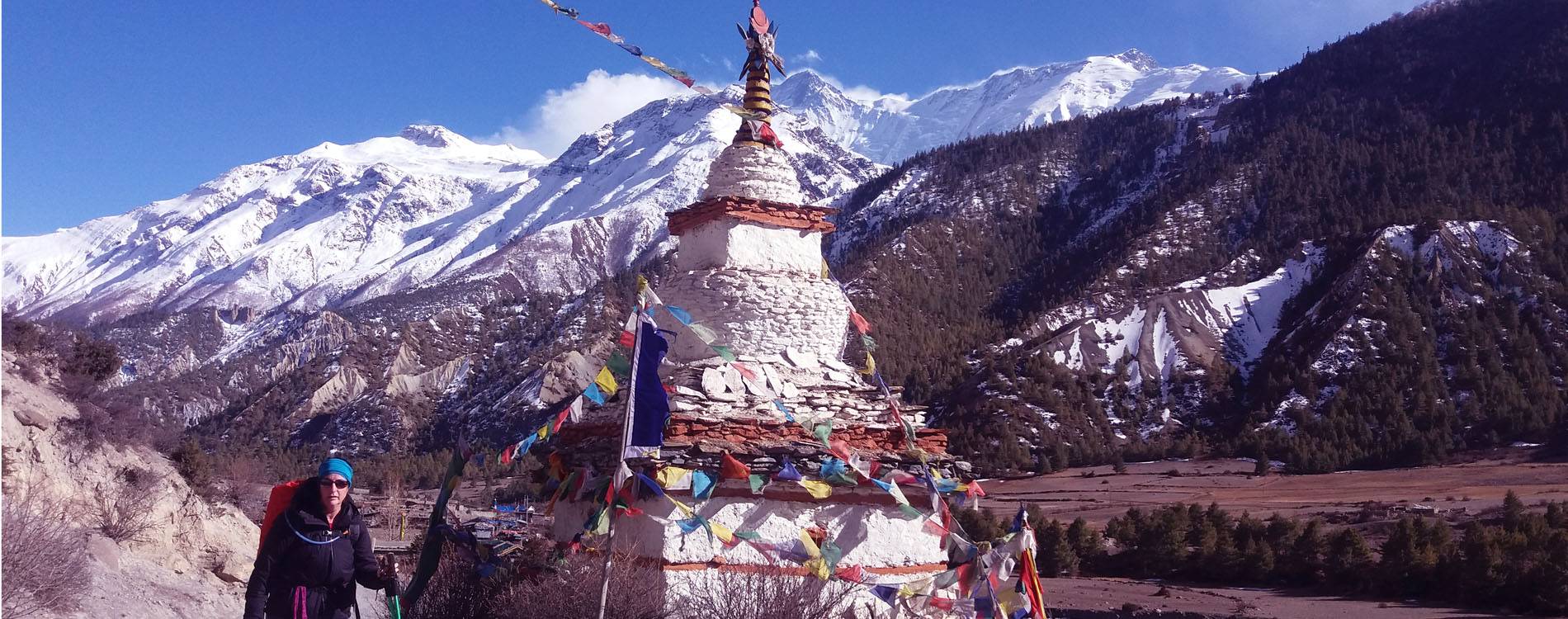
12 DAYS ANNAPURNA CIRCUIT TREK
This classic 12 Days Annapurna Circuit Trek is one of the most popular treks in Nepal. Every year thousands embark on this adventure and return with memories to last a lifetime! On this trek you...
How Should I Prepare for the Trek?
Preparing for the Annapurna Circuit trek involves several key steps:
- Physical Fitness: Build endurance and strength with cardio exercises and hiking on varied terrain.
- Altitude Acclimatization: Plan acclimatization days and ascend gradually to reduce the risk of altitude sickness.
- Packing: Pack light but efficiently with essential gear including sturdy trekking boots, layered clothing for varying temperatures, and basic toiletries.
- Permits and Documentation: Obtain necessary permits like TIMS and ACAP in advance. Carry identification and passport-sized photos.
- Training: Familiarize yourself with trekking routes and emergency procedures. Consider hiring a local guide for added safety and cultural insights.
By preparing meticulously and understanding the demands of the trek, you can enhance safety and enjoyment throughout your Annapurna Circuit adventure.

10 DAYS ANNAPURNA CIRCUIT TREK
Short of time does not mean you should miss out on this spectacular adventure!The 10 days Annapurna Circuit Trek takes you by road directly to the higher altitude villages of Besisahar, Chame & Ma...
Food and Accommodation
Food and accommodation along the Annapurna Circuit primarily consist of teahouses offering basic but hearty meals and lodging. In October, with the peak trekking season, teahouses can fill up quickly, requiring early bookings or flexibility in planning. Meals typically include dal bhat (rice and lentils), noodles, soups, and occasionally western dishes. Vegetarian options are plentiful, reflecting local dietary preferences.
Accommodations in teahouses are basic with shared rooms and common bathrooms, though some may offer private rooms for an additional cost. Bedding is usually provided, but it's advisable to carry a sleeping bag rated for cold temperatures, especially at higher altitudes where nights can be chilly.
Trekkers should carry snacks and energy bars for additional sustenance between meals. It's also recommended to purify water from teahouses or natural sources using purification tablets or filters to avoid waterborne illnesses.
Overall, while accommodations are basic, they provide a cozy retreat after long days of trekking amidst Nepal's stunning landscapes.
What About Drinking Water?
Ensuring safe drinking water is crucial during the Annapurna Circuit trek. Trekkers can access drinking water from teahouses, which typically provide boiled or filtered water for a nominal fee. Alternatively, natural water sources such as streams and springs are available along the trail, but these should be treated with purification tablets or filtered before consumption to prevent waterborne illnesses.
Carrying a reusable water bottle and water purification method (tablets or filter) is essential for staying hydrated throughout the trek. Avoid drinking untreated tap water or water from unreliable sources to minimize the risk of gastrointestinal issues.
By practicing proper hydration and water purification techniques, trekkers can maintain their health and energy levels, ensuring a safe and enjoyable experience on the Annapurna Circuit.
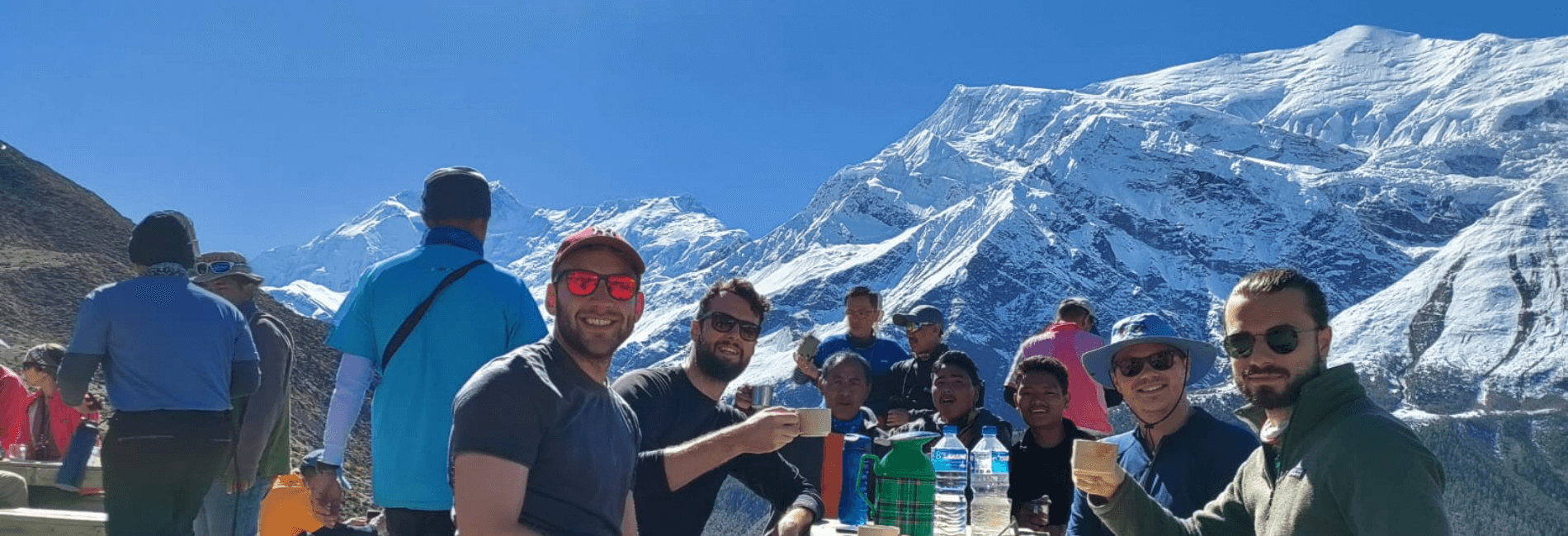
ANNAPURNA CIRCUIT TREK 7 DAYS
The 7 days Annapurna Circuit Trek is, for a good reason, one of the most popular treks in Nepal’s Annapurna Conservation Area where you will witness enormous snow-covered mountains, deep gorges &...
Conclusion
Embarking on the Annapurna Circuit trek in October offers adventurers a blend of natural beauty, cultural richness, and physical challenge amidst Nepal's Himalayan landscapes. While the trek presents logistical considerations such as booking accommodations in advance and preparing for varied weather conditions, the rewards are immense—stunning mountain vistas, cultural interactions in traditional villages, and personal achievement in completing one of the world's iconic treks.
By understanding the challenges, preparing adequately, and respecting local customs, trekkers can embark on a memorable journey through the heart of the Annapurna region. Whether you're a seasoned trekker or embarking on your first Himalayan adventure, the Annapurna Circuit in October promises an unforgettable experience, leaving you with cherished memories and a deeper appreciation for Nepal's natural and cultural heritage.
Annapurna Circuit Packages
10 Days Annapurna Circuit Trek
12 Days Annapurna Circuit Trek
14 Days Annapurna Circuit Trek
15 Days Annapurna Circuit Trek
Annapurna Circuit With Tilicho Lake Trek 9 Days
Annapurna Circuit With Tilicho Lake Trek 15 Days

ANNAPURNA CIRCUIT TREK 8 DAYS
The Annapurna Circuit Trek is, for a good reason, one of the most popular treks in Nepal’s Annapurna Conservation Area where you will witness enormous snow-covered mountains, deep gorges & high al...
Any Questions? Let Us Know.
Recent Posts
17th June, 2025


















